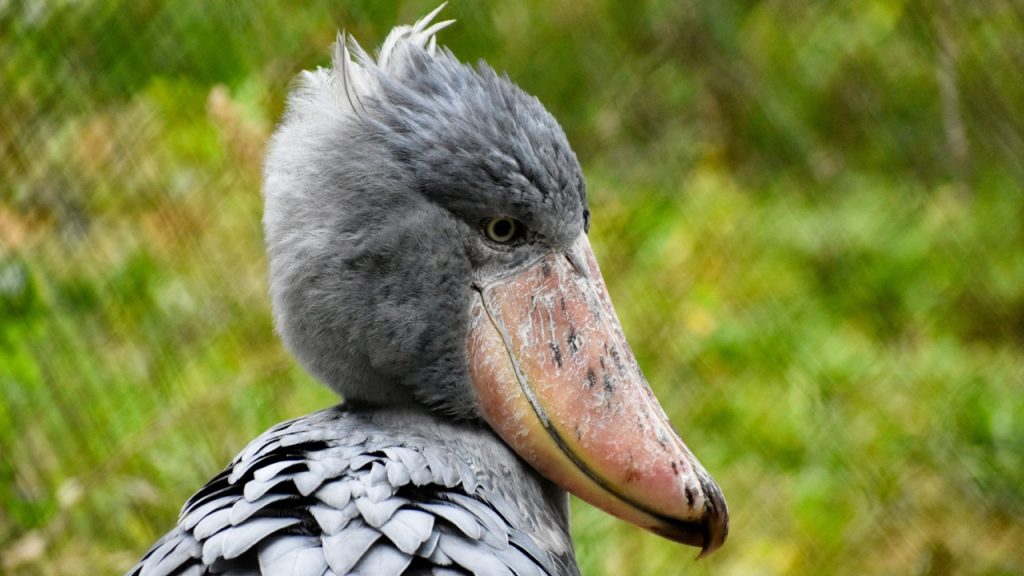The shoebilled crane, also known as the shoebill stork, or B-rex, is one of the most peculiar and fascinating birds on our planet. With its massive, shoe-shaped bill and piercing gaze, you can easily picture this bird roaming alongside the dinosaurs. And, when you hear that dinosaurs evolved into birds, one look at B-rex and you can almost see it happening. Native to the swamps of East Africa, the shoebill is a truly unique bird and the only living member of its genus Balaeniceps, and family, Balaenicipitidae.
It’s Not Actually a Crane
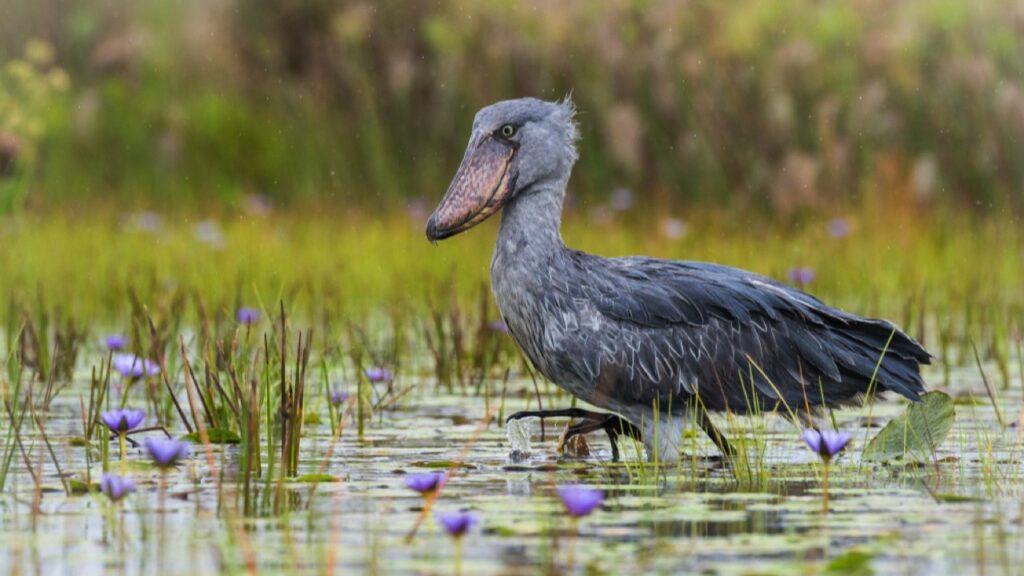
Despite its common name, the shoebill crane isn’t a crane at all. It’s more closely related to pelicans and herons. Scientists have placed it in its own family, Balaenicipitidae, due to its unique characteristics. This classification highlights just how special and distinct the shoebill is in the bird world.
That Bill Is Enormous
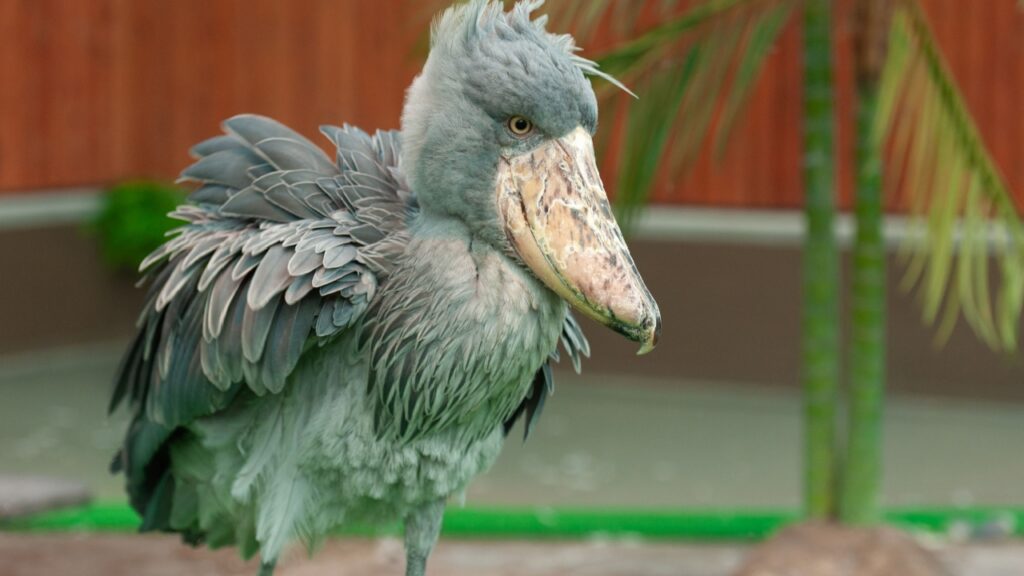
The shoebill’s most striking feature is its massive bill, which can grow up to 24 cm (9.5 inches) long and 20 cm (8 inches) wide. This huge bill gives the bird its name, as it resembles a wooden shoe or clog. The bill is not just for show; it’s a powerful tool for hunting and handling prey.
They’re Prehistoric-Looking for a Reason
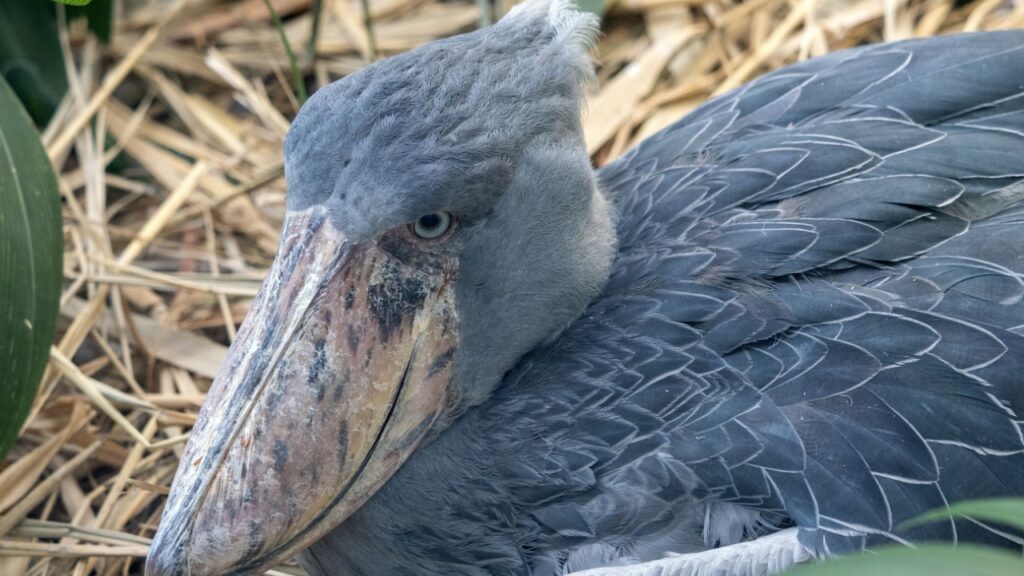
Shoebills have a prehistoric appearance, and for good reason. Their lineage dates back to the early Cenozoic era, about 65 million years ago. This makes them a living fossil, giving us a glimpse into what ancient birds might have looked like. Their unique appearance has earned them nicknames like “swamp monster” and “nightmare bird.”
They’re Excellent Hunters
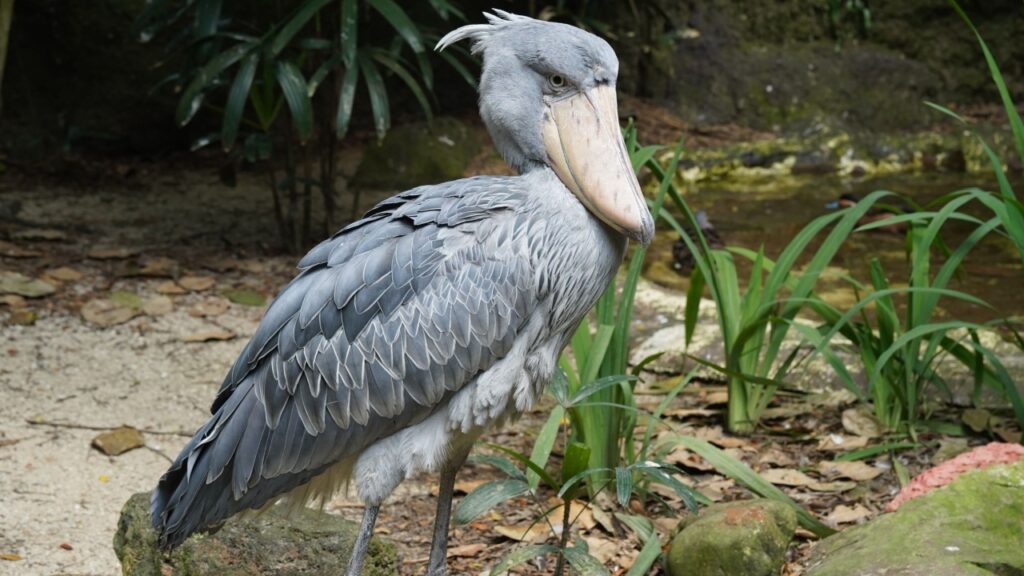
Shoebills are patient and skilled hunters. They can stand motionless for hours, waiting for the right moment to strike. When they do, they move with lightning speed, using their massive bill to scoop up fish, snakes, and even small crocodiles. Their hunting success rate is impressively high compared to many other predatory birds.
They Have a Unique Hunting Technique
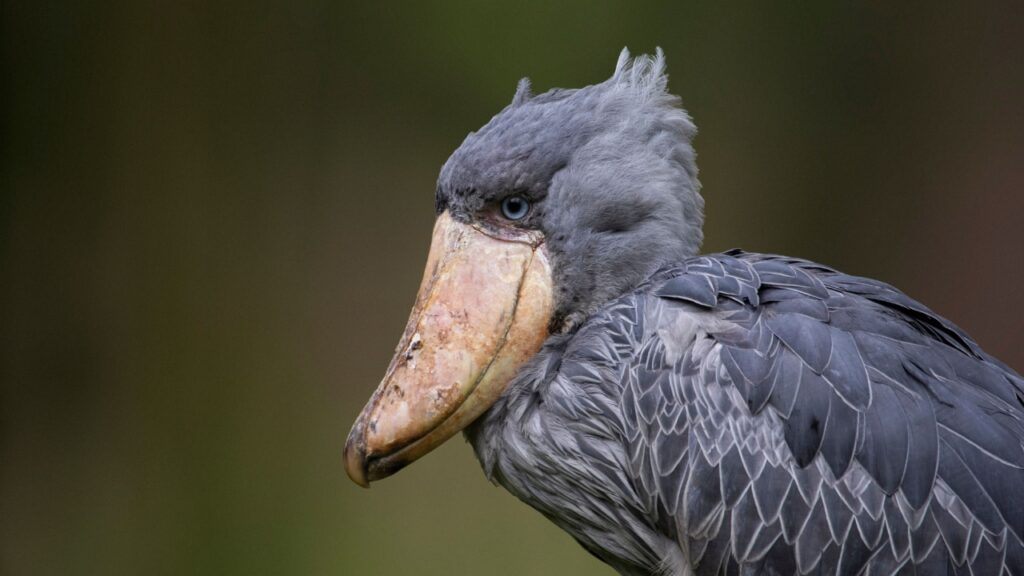
When hunting, shoebills use a technique called “collapsing.” They wait for fish to surface, then quickly collapse their bodies onto their prey. This sudden movement creates a dome of wings around the prey, trapping it before the shoebill strikes with its powerful bill. This technique is unique among wading birds and highly effective.
They’re Really Big Birds
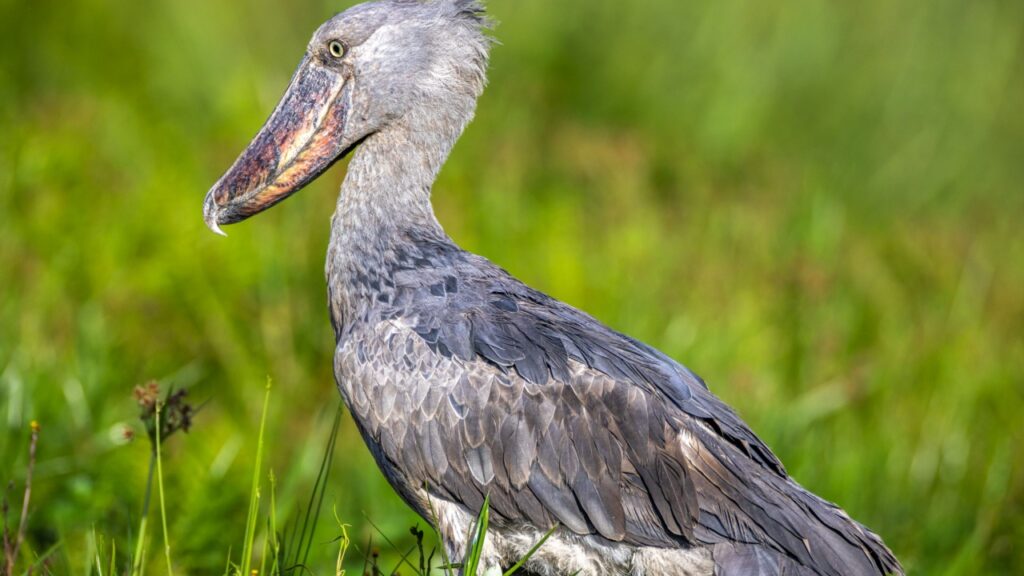
Shoebills are one of the largest birds in the world. They can stand up to 1.5 meters (5 feet) tall and have a wingspan of up to 2.6 meters (8.5 feet). Despite their size, they’re surprisingly light, weighing only 4-7 kg (9-15 lbs) due to their hollow bones, a characteristic they share with other birds.
They Have a Distinctive Call
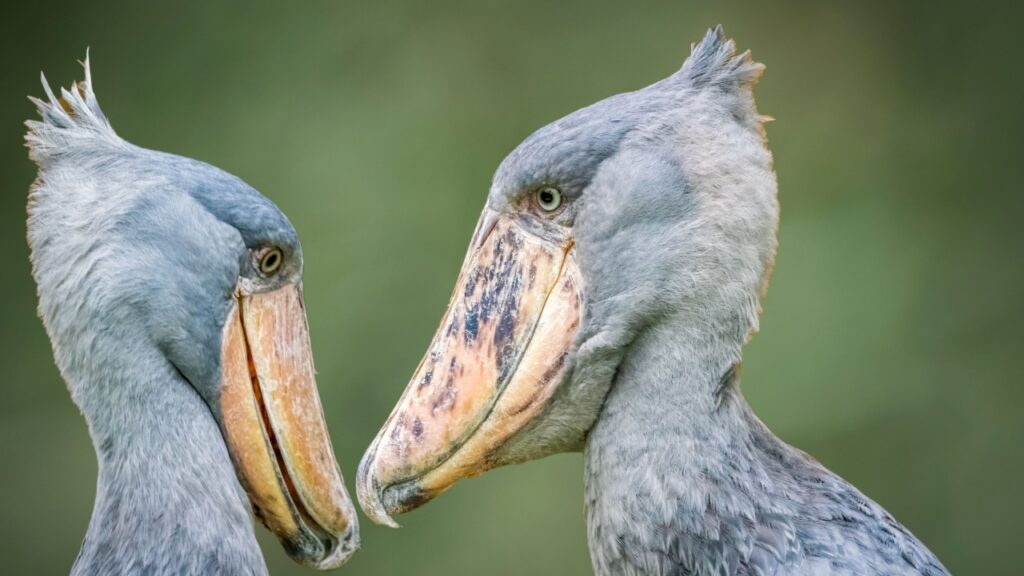
The shoebill’s call is as unique as its appearance. It sounds like a loud machine gun, consisting of rapid bill-clattering. This sound is created by rapidly opening and closing their bill, producing a series of loud claps. They use this call for communication and during courtship displays.
They Practice Siblicide
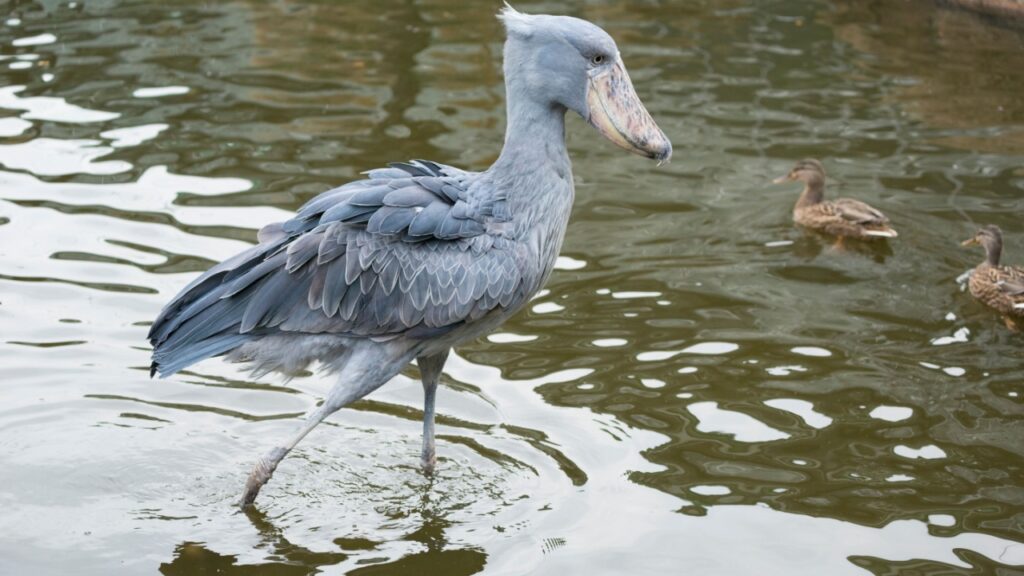
In a rather grim aspect of their behavior, shoebill chicks often engage in siblicide. The parents typically lay two eggs, but usually only one chick survives. The stronger chick will often attack and kill its sibling, ensuring it receives all the food and care from the parents. This behavior, while seemingly cruel, is a survival strategy in their harsh environment.
They’re Excellent at Standing Still
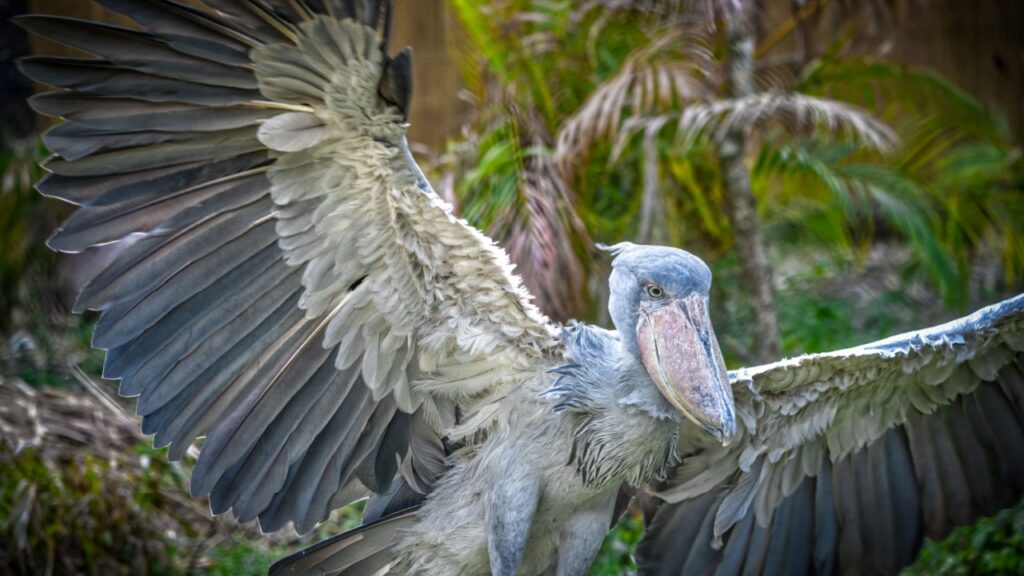
Shoebills are masters of stillness. They can stand motionless for hours, barely even blinking. This ability helps them hunt and also serves as a defense mechanism. When threatened, they often freeze in place, relying on their gray coloration to blend in with their surroundings.
They Have Surprisingly Expressive Eyes
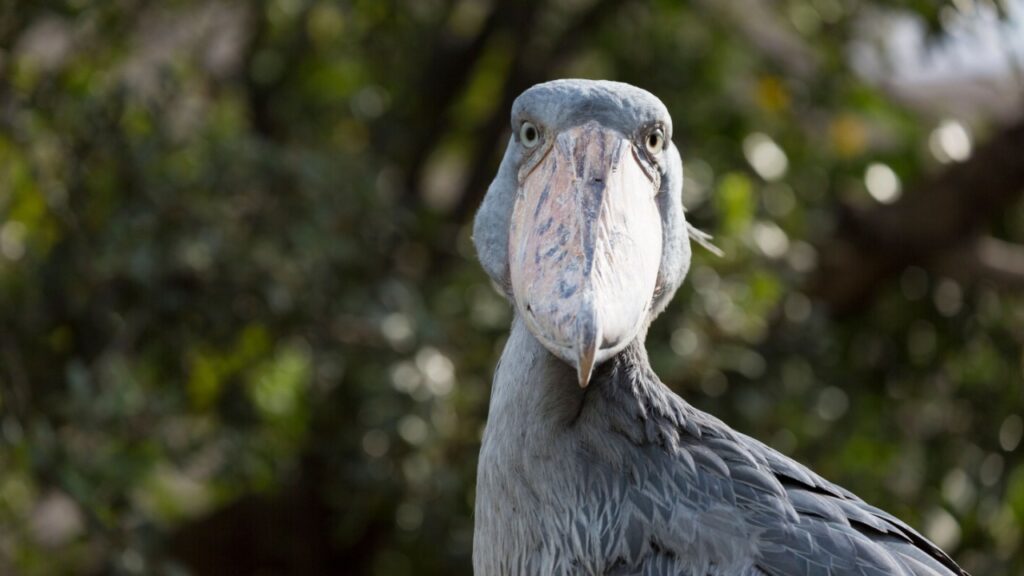
Despite their often stern appearance, shoebills have surprisingly expressive eyes. They have large, forward-facing eyes that give them excellent binocular vision. These eyes can convey a range of “expressions,” from curiosity to what humans might interpret as annoyance or disdain.
They’re Solitary Birds
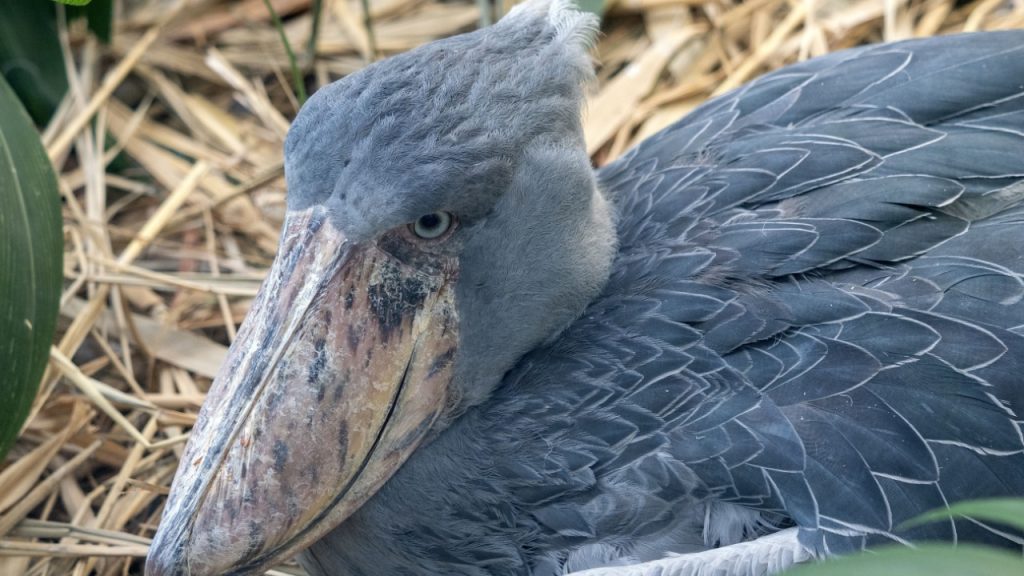
Unlike many other large wading birds, shoebills are generally solitary. They prefer to live and hunt alone, only coming together during breeding season. Even then, pairs will separate after mating and egg-laying, with each parent taking turns to incubate the eggs and care for the chicks.
They Have a Special Cooling System
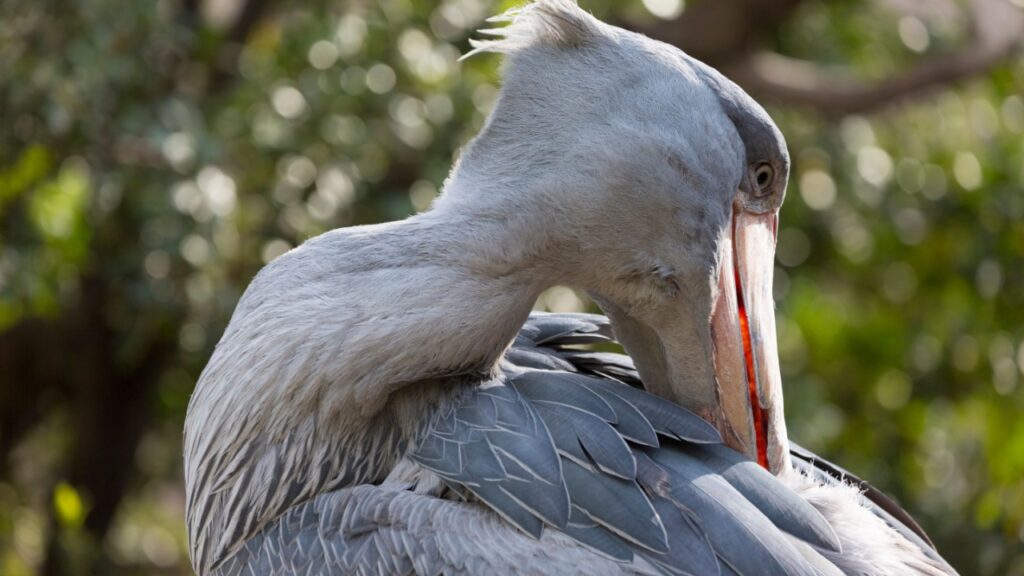
Shoebills have a unique way of keeping cool in their hot, swampy habitat. They defecate on their own legs, and as the liquid waste evaporates, it cools their body. This process, known as urohidrosis, is also used by storks and New World vultures.
They’re Endangered
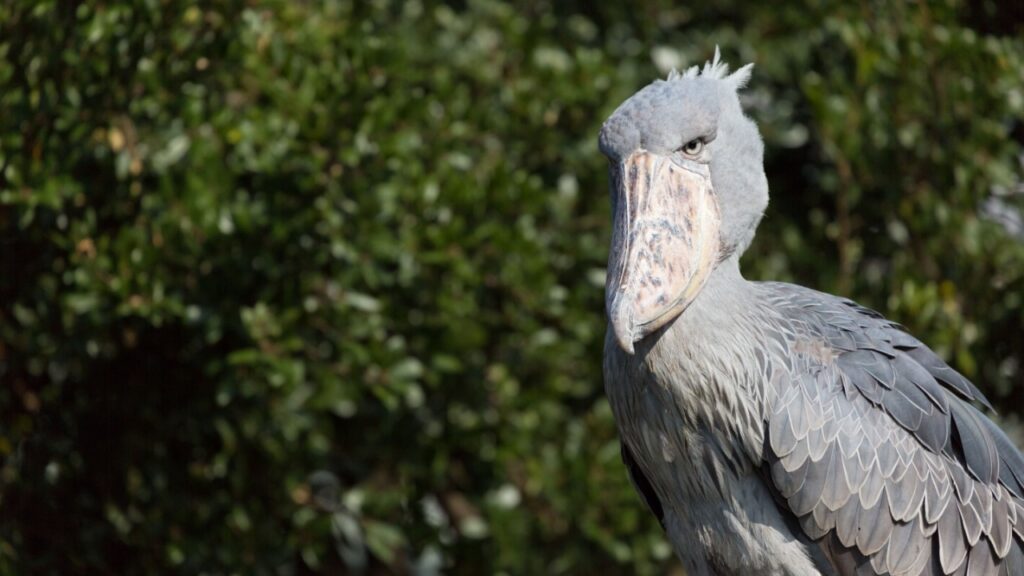
Unfortunately, shoebills are classified as vulnerable on the IUCN Red List. Their population is estimated to be between 5,000 and 8,000 individuals in the wild. Habitat loss, hunting, and the wildlife trade are the main threats to their survival. Conservation efforts are crucial to protect these unique birds.
They Have a Special Relationship with Hippos

Interestingly, shoebills often have a mutually beneficial relationship with hippopotamuses. The birds will often stand on the backs of hippos to fish, while the hippos don’t seem to mind this arrangement. This behavior provides the shoebills with an excellent fishing platform and may offer some protection from predators.
They’re Patient Parents

Shoebill parents are remarkably patient with their offspring. They will care for their chicks for up to 150 days after hatching, one of the longest fledging periods among birds. During this time, they teach their young essential skills like hunting and flying, ensuring the next generation’s survival.
Katy Willis is a writer, master herbalist, master gardener, and certified canine nutritionist who has been writing since 2002. She’s finds joy in learning new and interesting things, and finds history, science, and nature endlessly fascinating.
